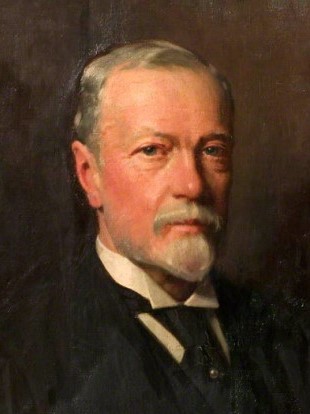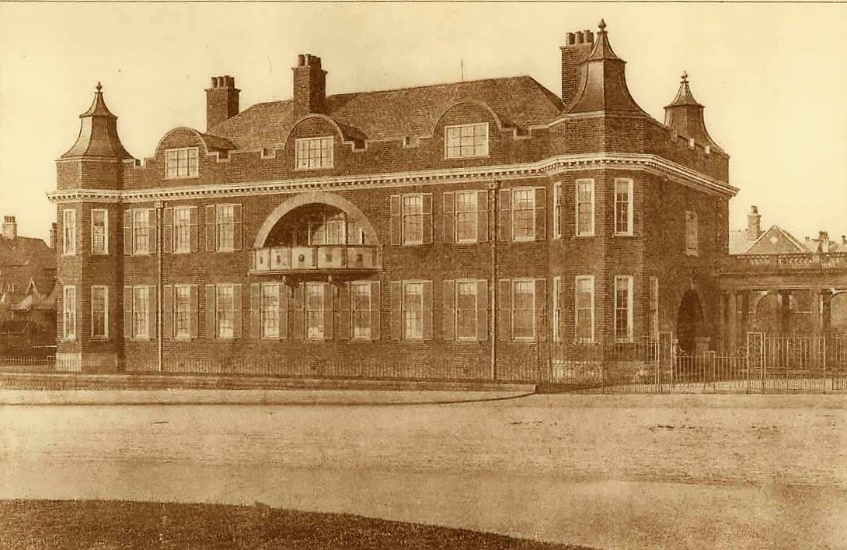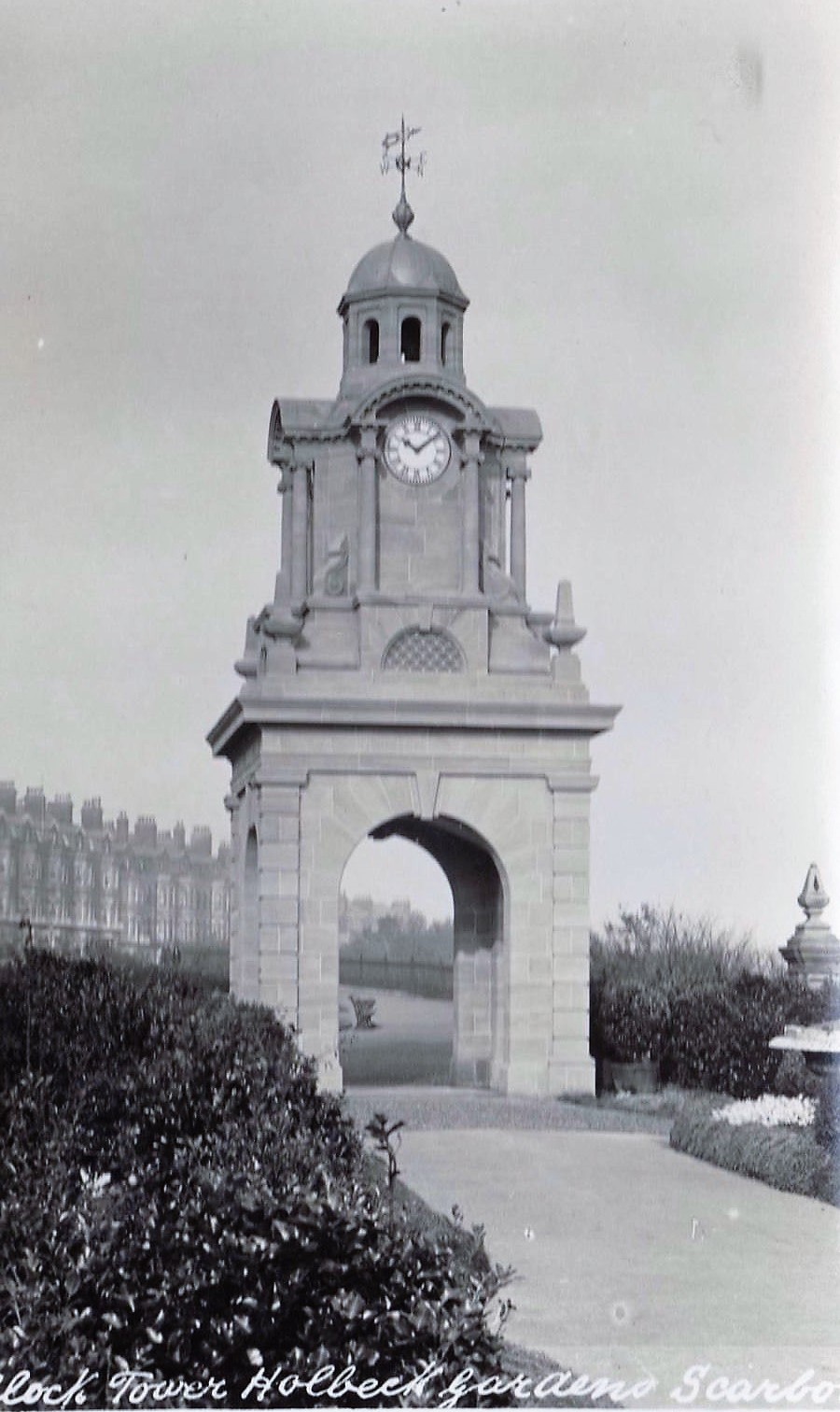
Alfred Shuttleworth was a businessman/engineer, who never made a permanent home in Scarborough, but nevertheless was a major benefactor to the town. His father was Jacob Shuttleworth, who had taken over the running of his father’s boat building business, on the river Witham, Lincolnshire, in 1832. In adjoining premises to the boat building yard was a steam-packet company run by Nathaniel Clayton, who had taken over the business on his father’s death in 1827, Nathanial had also built an iron-foundry on the site. In 1842 Jacob married Nathaniel’s sister, Sarah Grace Clayton, and around the same time Jacob and Nathaniel established the firm Clayton and Shuttleworth, building and selling steam and traction engines; they initially specialised in agricultural machinery such as threshing machines and hoists. The company was extremely successful, leading to the opening of branches in Austria, Hungary, and the present-day countries of Czech Republic, Poland and Ukraine.
On 23 May 1843, Sarah and Jacob had a son Alfred, followed in 1845 by a second son, Frank. Sadly, in 1849 Sarah died and Alfred was sent away to school in Rugby. On finishing his education, he entered the family business, working in every section of the company before being made a partner in 1869. At the same time, he married Nathaniel’s daughter, his cousin, Mary Ann Clayton, on the 11 March 1869. Their home was in Lincoln, but they found they loved Scarborough spending many months in the Esplanade area of the town. In 1880 Mary Ann died, at just 35-year-old, whilst visiting Scarborough and Alfred had her body returned to Lincoln to be buried in the family plot.
Even Mary Ann’s death never dampened Alfred’s love of Scarborough, and in 1905 he bought Redcourt on the Esplanade as a holiday home. Redcourt had been built just four years earlier for Colonel Frederick W Tannett-Walker, a mechanical and civil engineer, his invalid wife and two daughters; however, the cost of building it had proved to have stretched his means too far.
At the time Alfred bought Redcourt, he changed the name to Red Court, the town corporation was having a problem with the Warwick Tower. The Revolving Observational Tower sited near the castle entry had been built in 1897 by Thomas Warwick, after a little early success it started failing as a business venture; and Warwick walked away taking no responsibility for it. The corporation were left with a pile of rusting steel and the 500 tons of concrete it was built on. At the time the corporation had little spare money to solve the problem, so Alfred stepped in and paid the full cost of the tower’s removal.

In 2003 the popular TV series ‘Heartbeat’ had a spin off series launched, it was called ‘The Royal’. Red Court was selected to represent St Aidan’s Royal Free Hospital exterior, whilst the inside was filmed at St Luke’s Hospital in Bradford. The show ran for eight series ending in 2011.
Next door to Red Court, across Holbeck Road, lived an ex-mayor of the town, Council Robert Aspland Marrillier, who had died in 1903. Alfred bought his house, ‘Holbeck Hirst’, and had it demolished to improve his view out to sea and Filey Brigg. He then created a sunken garden, which he named Red Court Garden.
To commemorate the Coronation of King George V, on the 22 June 1911, Alfred arranged with Harry Smith the Borough Engineer, who was a good friend of his, to design and layout a clock tower, which he would pay for, across the road at the entrance to Holbeck Gardens. The clock in the tower was lit by gas and included a chime that sounded on the hour; Alfred opened it on 15 August 1911.

The South Cliff gardens were being constructed and this included the laying out of the Italian Gardens, Alfred paid for a statue of Mercury as a central feature to the lily pond and all the seating. The Italian Gardens were opened in 1914. These are just a few of the things that Alfred donated to the town, he made large donations to the hospital, the children’s homes and many of the churches in the area, all without publicity.
In 1917 he sold Red Court and moved back permanently to Lincoln. His parting gift to Scarborough was the sunken garden named Red Court Garden, his only stipulation was that there must be a permanent hedge around the garden to protect the visitors from cold winds. The corporation, revamped the gardens in 1937, adding a miniature water garden and renaming it Shuttleworth Gardens.
As Alfred’s permanent home was in Lincoln he was just as, if not more, generous to them as Scarborough. He was the Lincoln JP and in 1899 he was appointed the High Sheriff of Lincoln. He lived at Minster Yard until 1888, when he purchased Eastgate House, at the other side of the Cathedral. In 1892 he bought The Dolphin, one of the oldest inns in Lincoln, and had it demolished because it spoilt his view of the Cathedral. He also owned Hartsholme Hall near Lincoln, where, after a short illness, he died on 25 November 1925.
VISIT
Red Court - Esplanade
Holbeck Clock Tower - Esplanade
Italian Gardens - South Cliff Gardens
Shuttleworth Gardens - Esplanade
READ
Red Court, Scarborough - Edward Black 2006